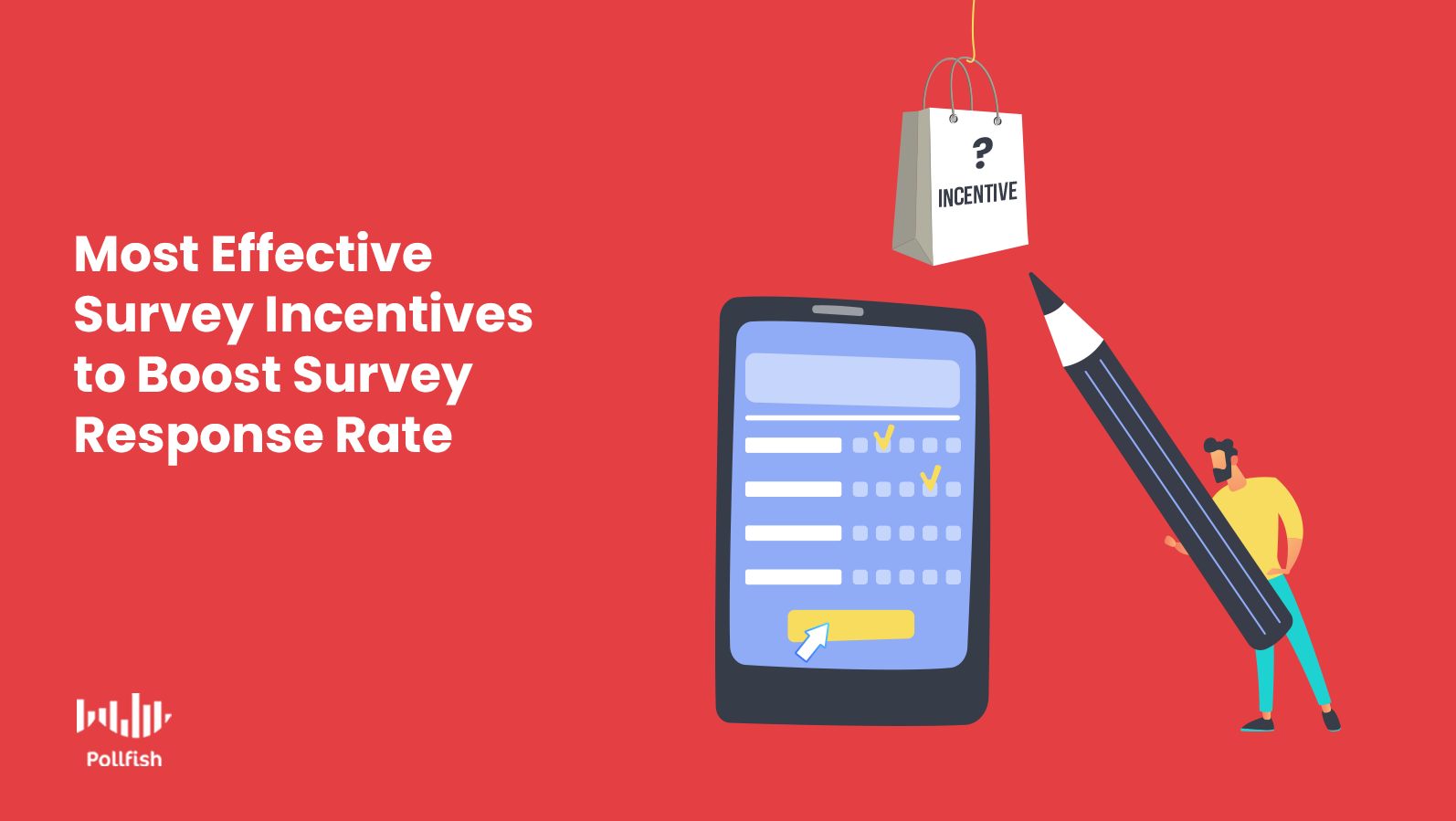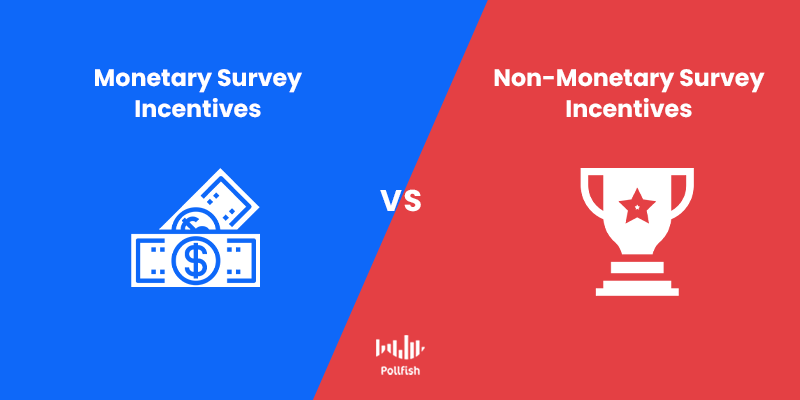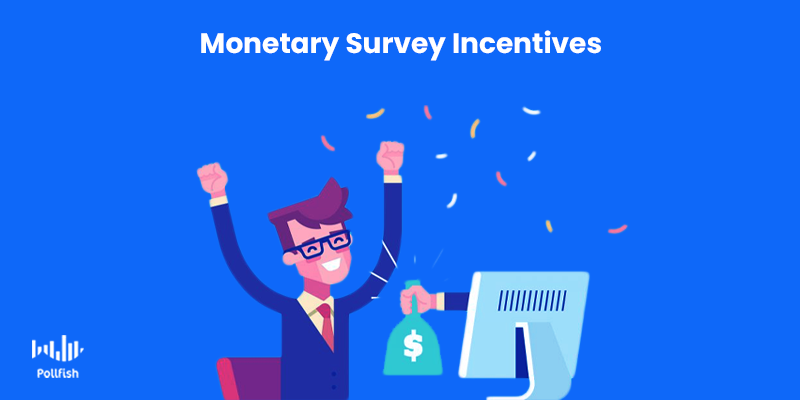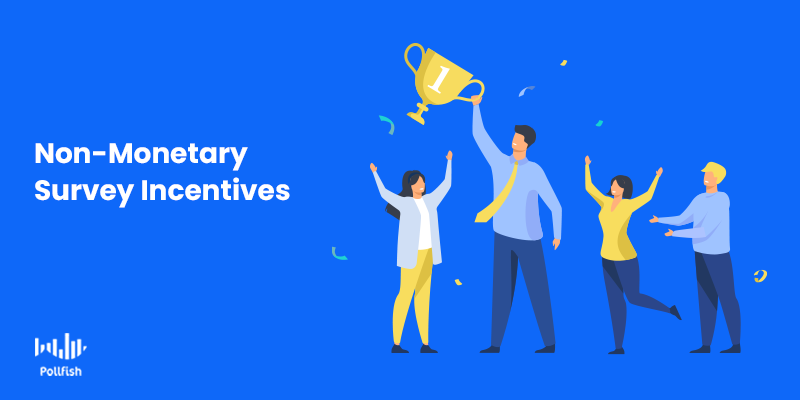The Best Survey Incentives to Increase Survey Participation

Survey incentives are invaluable to the online survey experience; market researchers and business owners benefit by implementing them into their surveys to increase participation.
This is largely because taking part in a survey, brief as it may be, is not everyone’s cup of tea. In fact, survey response rates fall on the lower end of the scale, with online survey response rates totaling to roughly 26%, aka under one third.
It should come as no surprise that many online users simply have no interest in taking a survey, as they are exposed to so many other on-site elements that draw their attention.
In this way, having a survey distributed on a popular website or app can be a drawback, as users’ attention can easily be consumed by the contents of their digital environment.
Survey incentives are proven to increase survey response rates, thereby increasing target market respondents in your survey. Additionally, by adding more appeal to a survey, online survey platforms can accumulate more completes in a quicker time
This article will cover survey incentives, why they matter and the best kinds to use to increase survey participation.
Defining Survey Incentives
As its name suggests, a survey incentive incites survey participants (or targets) to complete a survey by gifting them with some kind of stimulus.
Incentives can take various forms, which is where marketers and market researchers can let their creativity take the wheel. This is useful as brands often reveal they are behind a survey when they provide incentives (unless their incentive strategy involves partnering with the publishing websites of their surveys, in which case, the publishers are attributed with the incentive).
Regardless of who gets credit for providing the incentive, it is necessary to draw in interest and truthful responses from online visitors. It is also a valuable way to thank survey respondents, as a thank you note alone will not suffice.
Monetary Vs Non-Monetary Survey Incentives
 Incentivizing respondents is divided into two major forms: monetary incentives and non-monetary incentives. Both are effective drivers of survey engagement and can drive repeat participation, the latter of which is critical for longitudinal studies.
Incentivizing respondents is divided into two major forms: monetary incentives and non-monetary incentives. Both are effective drivers of survey engagement and can drive repeat participation, the latter of which is critical for longitudinal studies.
The following expounds on both chief incentives.
Monetary Survey Incentives
These are money or currency-based gifts that researchers use to reel in survey respondents. The responders receive the incentives only after completing their surveys. A potent online survey tool ought to be able to distinguish between a fully completed survey and an invalid survey.
For example, it should be able to mark gibberish answers and identify flatliners and other types of suspicious survey respondents.
Here are a few useful monetary incentives to employ, including best practices on when and how to use them.

- Cash (Via direct deposit or a digital payments system, i.e., Paypal).
- How much? It depends on the length and audience of the survey. Ex:
- A five-minute survey for students should be incentivized by approx. $1-$10.
- A 20-minute survey for clinicians, scientists and other professionals should be $30-$100.
- How much? It depends on the length and audience of the survey. Ex:
- Gift cards
- Gift cards to your own business will not solely be an incentive but will draw attention to/promote your business. It will also not cost brands any money (as the card is redeemable at their business).
- Gift cards to popular retailers within your target market. This requires running primary and secondary market research to understand and segment your target market.
- The price range should correspond with the time required for the survey. Ex: $5-$15 for a survey taking about 15 minutes.
- Coupons
- Like gift cards, coupons can be offered to your business, or a popular one among your target market (NOT your competitors’).
- Coupons should offer markdowns and discounts on popular products and services.
- The offer should hover around 25% off.
- Checks/Money Orders
- Will require collecting more personal information from respondents, such as addresses. This can serve as proof of residence in a particular demographic area if you need residents of a specific geographic location.
- Keep the price ranges congruent with the amount of time/effort of a survey.
- Ex: $5-$15 for surveys taking 10-15 minutes.
- Donations to Charity
- These are donations you send to charities or causes for the better good when respondents complete a survey.
- Brands can give respondents the option of sending the donations on their behalf, i.e., with their names as the donors.
- This involves picking a charity that relates to your niche and is recognizable by your target market.
- The price range can be concrete — $1-$20, or it can be expressed as a percentage, i.e., 10% of profits will go to a charity.
Non-Monetary Survey Incentives

These incentives coax respondents to complete surveys through non-monetary offerings. They still offer something of value to the respondent. This is a more practical use for B2B brands, as small monetary incentives often won’t be enough for, let’s say a SaaS company. This opens the door for more types of incentives.
Below are some of the kinds to employ, along with their best practices.
- Product Samples
- These allow businesses to save money and resources. Plenty of people may send requests for product samples, but are they actually considering making a purchase? This answer may vary. But when you use samples as an incentive, you are guaranteed to gain something critical in return: customer data.
- These samples should correlate with the efforts required for the survey. As such, small surveys should call for small samples (think in terms of both size and type of product).
- Trial Subscription
- Much like samples, these offer a sampling of a service. If you offer media such as online magazines, news sources, trade publications or video content, consider offering a free or freemium trial.
- The trials should run no more than 4 days to a week.
- Loyalty Programs
- Both a practical non-monetary incentive and a method for building customer loyalty, this type of program will give respondents a taste of what your top customers gain when earning loyalty points, likely stoking their interest in your business.
- Loyalty programs work by offering points, which help customers earn freebies or other perks.
- Offer 1-2 loyalty rewards at most for survey completion.
- Company Literature
- Most useful for B2B respondents, who are intent on learning about a particular discipline that your brand offers in its marketing content.
- Examples include white papers, industry and consumer reports, webinars and video content.
- This is most ideal when studying professionals or hiring survey panels.
- Partnership Benefits
- This is a mutual incentive for companies that want to partner up for collaborative survey research. (Ideal for both B2C and B2B businesses, including SaaS companies)
- How it works: Your business grants small discounts to the partnering company’s customers; the partner business follows suit for your customers.
- Partnerships and other business affiliations provide more exposure for your business.
Hybrid Incentives
When brainstorming survey incentives, you need not rely on one of the chief, aforementioned methods. This is because you can merge these approaches by offering multiple incentives. This is especially useful when dividing surveys across market segments, as certain segments may be more receptive to one form of survey incentive over the other.
Additionally, there are methods that allow you to offer either monetary or nonmonetary incentives. Here is the following list of such means:
- Sweepstakes
- Also called a raffle or a drawing, sweepstakes provide an exciting opportunity for respondents to win a prize, when chosen at random.
- The prize can be monetary or a product, service, experience, etc.
- Every respondent taking part in the survey should have an equal chance of winning.
- Giveaways
- Similar to sweepstakes, giveaways allow respondents to win something either monetary or nonmonetary via a drawing.
- However, giveaways can give all survey respondents the assurance of winning something.
- The difference lies in what respondents can receive, not if they will receive something at all, as in with sweepstakes.
- Ex: One responder may win a magazine subscription, while the other may win a coupon.
- Games
- Following suit with sweepstakes and giveaways, games allow for a more creative way to incentivize respondents.
- Businesses can enter respondents to play a game, granting them the chance to win a prize.
- Only the winners will be sent a prize. This is ideal for those seeking something more than just receiving a reward.
When to Use Survey Incentives
Market researchers and business owners can best benefit from survey incentives to motivate a targeted audience they have less data about. For example, perhaps not all of your quotas on one demographic or psychographic population are being filled. A survey incentive can buttress this obtaining this objective.
Or — perhaps your survey response rates are low. Implementing survey incentives will boost this metric. No one wants to do anything for free, regardless of its simplicity and little timing.
Then there is the case of supply. Some businesses have plenty of leftover samples from a particular campaign, whether it was sending samples to those who requested them or sending goods to other businesses as part of an ABM campaign used in marketing. Rather than discard these items or let them collect dust, you can repurpose them for survey research.
The Online Survey Tool as the Survey Incentive
A robust online survey platform is a necessity for any marketer or market researcher, even with a steady survey incentive strategy in place. This is because an effective online survey tool won’t stop iterating surveys across a wide online ecosystem of websites and apps until it receives ALL the preset number of survey completions.
However, brands would be remiss to completely disregard the survey incentive approach, even with a strong survey platform in tow. This is because offering incentives will cast your business into the minds of your target market, i.e, the most valuable customers and prospects.
The experience of gaining something (the incentive) from a brand is far more memorable than simply taking a survey that mentions a brand.
Thus, by providing customers with a survey on matters relevant to them and offering them an incentive, which can be your company’s product, you are differentiating your brand from that of your competitors.
Frequently asked questions
What is a survey incentive?
A survey incentive is anything that encourages individuals to participate in a survey. The incentive itself can come in a wide variety of forms, ranging from discount codes, monetary compensation, content, and more.
What are examples of monetary survey incentives?
Monetary survey incentives can take the form of cash or checks, gift cards, coupons, discount codes, and donations to charity.
What are some examples of non-monetary survey incentives?
Non-monetary survey incentives include product samples, company literature, media, or other forms of content, membership in a loyalty program, and trial subscriptions.
What is a hybrid survey incentive?
Hybrid incentives are those that offer a monetary or non-monetary reward to select recipients. For example, by completing a survey, the participant is entered into a raffle or giveaway.
What are the benefits of offering survey incentives?
Survey incentives are known to increase the response rates of surveys. Incentives can encourage more people to participate in your survey, which improves the response rate, thereby reducing the margin of error since you’re gaining more respondents that represent a target population
Pollfish Marketing Team
Ready to Try Pollfish?
Create your survey with AI, target high-quality respondents starting at $0.95 per complete, and start getting results in just minutes in real-time. From running a simple product concept survey to managing a constant stream of trackers for dozens of clients in dozens of countries, we’ve got you.
